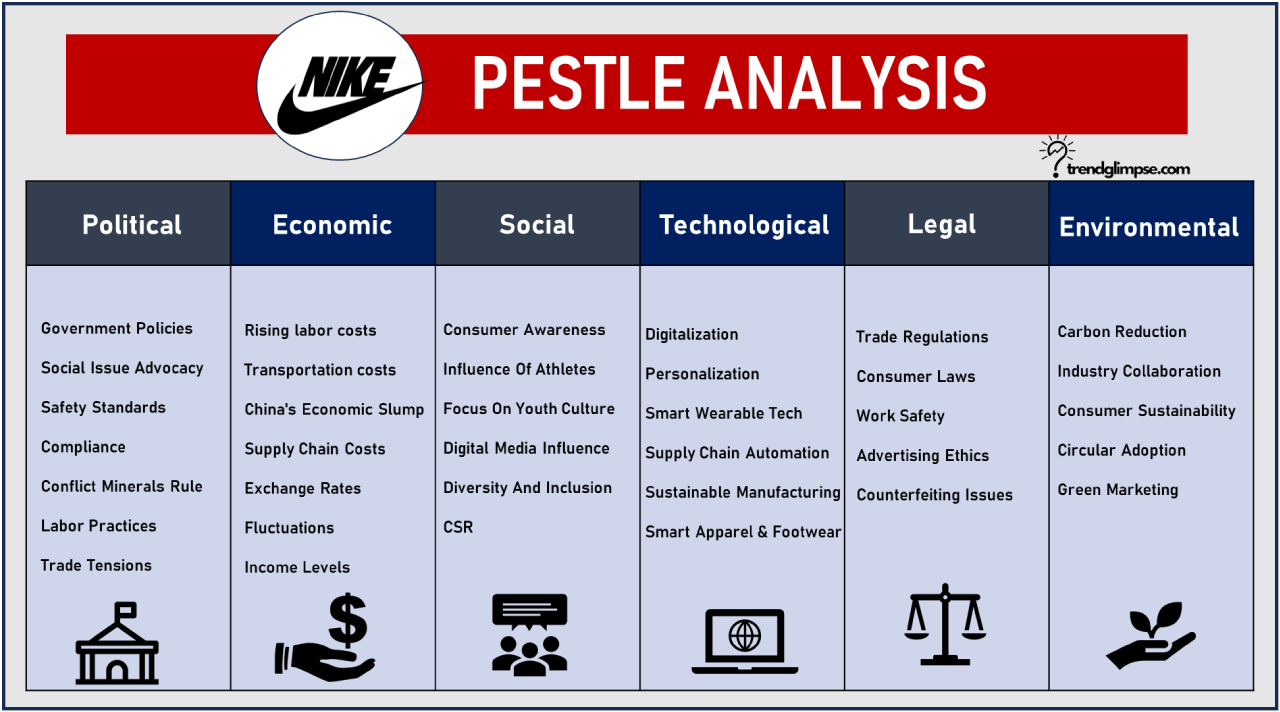Overview of Nike
Nike is one of the most recognizable brands in the world, known for its swoosh logo and popular shoes and apparel. But there’s a lot that goes into Nike’s success beyond just marketing – external factors that Nike must consider in its strategic planning. Looking at Nike PESTLE analysis framework helps shed light on these external influences.
Headquarters: Beaverton, Oregon, United States
Industry: Apparel, Accessories, Sports Equipment
Current CEO: John Donahoe
Annual Revenue [2023]: US$ 51.22 Billion
Employee Count: ~83,700
Website: nike.com
One key factor is Nike’s financial performance. As of 2023, Nike reported annual revenues of over $51.217 billion, representing a 9.65% increase from the previous year. Impressively, Nike has seen consistent revenue growth over the last 5 years, even during challenging macroeconomic conditions. This growth is fueled by expansion in international markets as well as strong performance in North America. Nike’s scale and brand loyalty allow it to maintain premium pricing, boosting profitability. Digital sales are also surging for Nike, now making up over 26% of total revenue.
Athletic Footwear, Apparel, Accessories, Sponsorships, Branded Merchandise
Brand Portfolio of Nike
NIKE Brand, Jordan Brand, Converse
Competitiors of Nike
Adidas AG, Puma SE, Under Armour, Inc., Reebok International Ltd., ASICS Corporation, New Balance Athletics, Inc., Skechers USA, Inc., Fila, Inc., ASICS Corporation, Anta Sports Products Limited, Li-Ning Company Limited, K-Swiss Inc., Brooks Sports, Inc., Vans, Inc., Mizuno Corporation, The North Face, Inc., Salomon S.A., Columbia Sportswear Company
In this analysis, we look into the various external factors that impact Nike’s operations and decision-making. This systematic examination aids not only in risk management but also in identifying avenues for growth and innovation.
Nike PESTLE Analysis
Political Factors Impacting Nike
Government Regulations and Policies
When it comes to big companies like Nike, the government lays down a bunch of rules that shape what they can and can’t do. For example, in the U.S., there’s a federal agency called the Consumer Product Safety Commission (CPSC) that makes sure athletic shoes meet safety standards to protect customers. Nike has to follow those regulations if they want to stay in business.
There are also regulations around ethical manufacturing, like avoiding child labor or ensuring good working conditions. And laws on material sourcing that require Nike to track where their raw materials come from. These regulations are designed to protect consumers and maintain the industry’s integrity.
Trade policies set by the government also affect Nike in a big way. For instance, when the U.S. and China got into that trade war a few years back, the Trump administration put new tariffs on Chinese imports. Since Nike makes a lot of goods in China, those tariffs really drove up their costs. It also caused issues in their supply chain and logistics out of China. So, government trade decisions can make operations way harder for global companies like Nike.
Increasing Expectations
In today’s political climate, consumers and the public increasingly expect companies to take a stand on important issues, and they may view silence as a form of complicity. Nike released a Colin Kaepernick ad celebrating the 30th anniversary of their “Just do it” slogan, activism against racial injustice.
The ad received both strong support from athletes and activists and criticism from some, including then President Donald Trump. But Nike is positioning itself as a brand supporting athletes who speak out on social and political issues, even if it risks losing some fans.
Compliance with Safety Standards
Nike also conducts regular assessments and audits to identify potential risks or hazards that may affect employees. Failing to meet safety standards can have serious consequences for Nike. In addition to potential legal ramifications, it can harm the company’s reputation and lead to a loss of consumer trust. Nike has taken steps to address safety concerns, such as implementing incident reporting protocols and employee well-being initiatives.
Conflict Minerals Rule
The Conflict Minerals Rule requires companies to disclose their use of certain minerals, such as tin, tungsten, and gold, that may be sourced from conflict-affected regions. Nike is committed to responsible sourcing and avoiding conflict minerals in its supply chain.
Nike intends to continue to engage with its Covered Suppliers to obtain current, accurate, and complete information about its 3TG supply chain, using the 2016 major revision of the Conflict Minerals Reporting Template. Nike has taken steps to ensure responsible sourcing, such as conducting due diligence on its suppliers and requiring them to comply with the company’s Code of Conduct.
Labor Practices and Public Scrutiny
Nike’s gotten a lot of public scrutiny over the years for their workplace and wage issues, like those sweatshop conditions in factories back in the 1990s.
Even today, activist groups are pushing Nike to be more transparent about conditions for workers making their products. Just this year, Tulipshare, a shareholder platform called on Nike to disclose more on their supply chain practices.
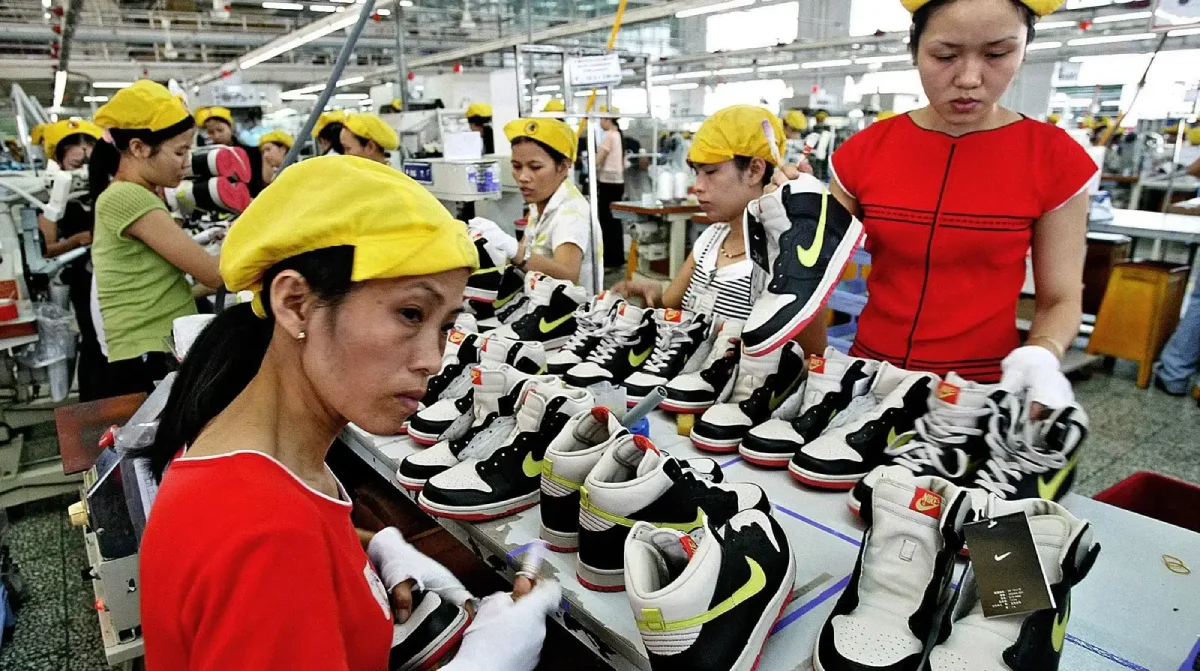
And recently in 2023, Canada’s business ethics watchdog has began conducting investigations into Nike Canada and Dynasty Gold to probe allegations of their involvement with forced Uyghur labor in China.
To Nike’s credit, they have taken some steps to improve, like implementing conduct codes for suppliers and doing audits to check on compliance. But labor practices remain a controversial issue for them even now. As a major global brand, Nike has to continually address concerns over worker treatment and make progress on meeting ethical standards. There’s still pressure on them to do more when it comes to fair wages and workplace conditions throughout their supply chain.
Trade Tensions, Political Instability, and Increased Production Costs
Trade deals between countries, like NAFTA or its successor, USMCA between the U.S., Mexico, and Canada, shape how Nike can move products, parts, and materials around the world. These trade policies influence Nike’s costs and logistics significantly.
Lately, political instability in some Latin American countries has caused protests and strikes that disrupted Nike’s supply chain and sales in those regions. For example, in Chile and Ecuador just recently. When that kind of instances occur, it can really disrupt Nike’s manufacturing and distribution, hitting their bottom line and brand image.
So Nike has to constantly monitor how trade agreements open up or restrict business across borders. And keep a close eye on political situations around the world that could suddenly block the flow of Nike goods and drive up operational costs. Managing global trade and political issues is key for smooth operations.
You Might Also Like: Walmart PESTLE Analysis
Economic Factors Affecting Nike
Rising labor costs in developing countries
Nike’s earnings are partially reliant on the affordable labor in Far Eastern nations. However, this is changing, which might mean higher Nike prices. For example, in 2021, Nike’s suppliers in Vietnam had to shut down factories due to COVID-19 restrictions, leading to a shortage of workers and increased labor costs. Higher wages increase production costs and squeeze profit margins if Nike can’t pass on the costs. It may force Nike to seek even lower cost countries.
High transportation costs for materials and products
Nike operates in a highly competitive industry, where transportation costs for materials and products can have a huge effect on their profits. Nike uses air freight and ocean freight extensively to transport raw materials and components to factories, and move finished products to distribution centers worldwide. Fuel price increases driven by high oil prices or geopolitical conflicts directly impact Nike’s transportation costs. Nike may have to raise prices to offset the impact.
Nike’s profit margins have been significantly impacted by continued chaos and higher costs in the global shipping industry. Shipping a container from Asia to the US now costs Nike about 5 times more than pre-pandemic.
Slowdown of the Chinese economy
The Chinese economy is slowing amid trade tensions, and debt problems in real estate. It is having ripple effects across the global economy as its imports decline. Construction materials, electronics, and more have seen sliding imports.
Greater China represents about 17% of Nike’s sales and over 20% of profits. Slower growth here will make hitting their overall target more difficult. Sales growth in Greater China has slowed since the Xinjiang cotton boycott began in March 2021. Local brands like Anta and Li Ning are also gaining share in China with strong growth.
Supply Chain Costs
Nike manages a huge global supply chain network spanning over 40 countries for materials, manufacturing and distribution. Supply chain disruptions from trade disputes, extreme weather, or epidemics can severely impact costs and lead to shortages.
Nike used more air freight instead of cheaper ocean freight in fiscal 2020 to mitigate production delays and factory closures in Asia due to COVID-19. Air freight costs significantly more than ocean freight per unit shipped. The company was also shifting production to other countries.
Exchange Rates Fluctuations
Nike gets significant sales internationally but reports in USD. Currency fluctuations especially a strong USD can reduce the value of non-US sales. Nike gets significant sales internationally but reports in USD. Currency fluctuations especially a strong USD can reduce the value of non-US sales. Nike earns over 50% of revenues internationally but reports in USD.
Currency rate volatility especially a strong USD can impact translated revenues. China’s currency has depreciated over 5% against the USD this year. This spills over to hurt currencies in Asia, Latin America, and Central/Eastern Europe.
Consumer Income Levels
Most Nike products like athletic footwear, apparel and equipment are discretionary purchases for consumers rather than necessities. This makes demand sensitive to the amount of discretionary income consumers have.
Nike faces competition from lower-priced athletic brands during downturns as consumers trade down when their budgets are squeezed. This impacts Nike’s market share. On the other hand, Nike has benefitted from rising consumer incomes and growing middle classes in developing countries
You Might Also Like: Target PESTLE Analysis
Social Factors Influencing Nike
Consumer Awareness of Health and Fitness
You know how people started getting more into athleisure wear, which is basically wearing sporty clothes not just for exercise, but also for everyday style? And those fitness trackers like FitBits became super popular? Nike saw all of this happening and decided to make the most of it.
They also developed innovative shoe technologies like Flyknit, Flywire, and FlyEase for comfort and injury prevention, whether you’re running or just need comfy shoes.
But they didn’t stop at shoes. Nike created the Nike+ ecosystem with apps, sensors, and trackers to help you monitor your workouts and health metrics. They make sure that the user can keep tabs on their fitness activities and goals, fitting into the trend of measuring and analyzing every aspect of life.
Influence Of Sports Athletes and Celebrity Endorsements
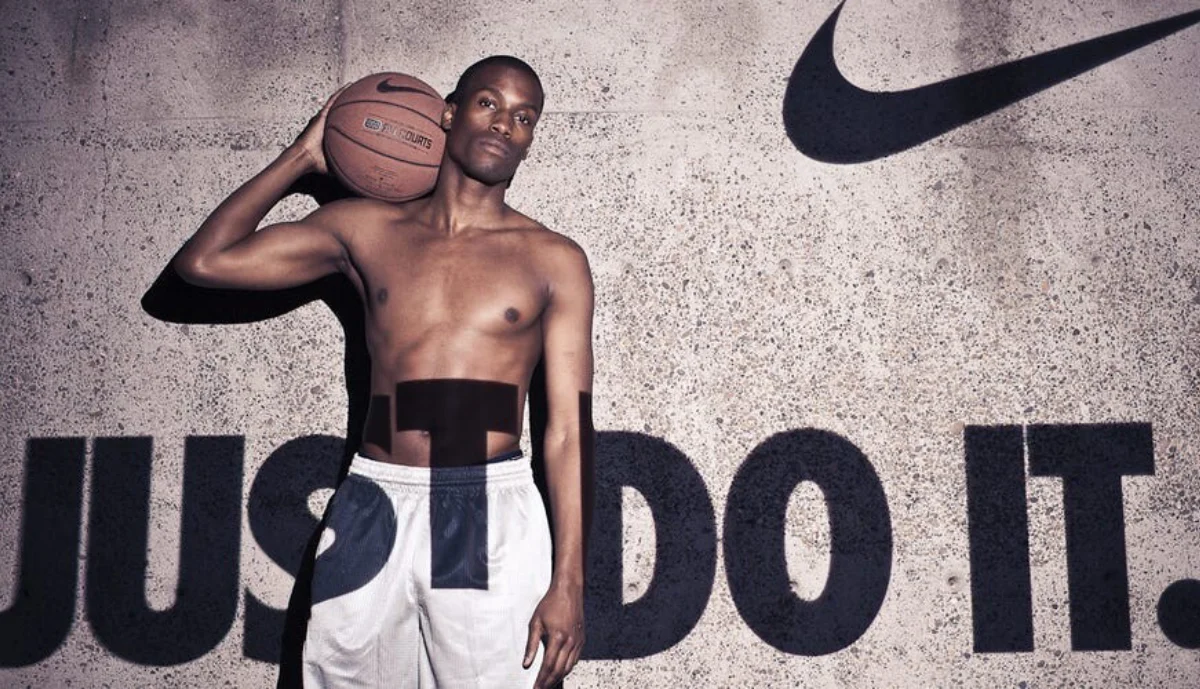
Athlete sponsorship agreements represent a significant marketing investment for Nike, involving not just payments but product development and advertising campaigns built around those stars. Nike has been strategic in sponsoring both established sports heroes as well as up-and-coming athletes with strong social media follower bases.
Getting top athletes and sports stars to wear and promote Nike products has been critical for building Nike’s brand credibility and prestige globally. Deals with Michael Jordan, LeBron James, Cristiano Ronaldo and more have enhanced Nike’s public image.
Focus On Youth Culture
Since the 1980s, Nike has been all about capturing the youth counter-culture vibe, portraying itself as edgy and rebellious. They’ve achieved this through clever marketing, athlete collaborations, and sponsorships to make Nike a part of youth identity.
Marketing campaigns, athlete partnerships, and sponsorships aim to make Nike part of youth identity and self-expression. The complex sneakerhead subculture of collectors has become an important segment for Nike. Limited edition drops generate hype.
They have stayed relevant to youth culture – the core of sneakerhead hype – through things like artist collabs, gaming, customization, and social media energy.
Rappers like Travis Scott and Drake have collaborated with Nike on limited capsule collections that integrate the artists’ aesthetics. Scott’s Air Jordan 1 collab had customization options and sold out in minutes.
Nike has partnered with top TikTok creators and influencers to promote new shoe releases. The #kickstok hashtag drives organic user generated content showcasing Nike shoes.
Social Media and Digital Influence
Nike knows that Instagram is a hotspot for trendy influencers and athletes. They collaborate with them to subtly promote their new shoe releases. In 2023, they featured Megan Thee Stallion and other iconic women in a campaign. The idea behind this is to celebrate the joy, freedom, and limitless possibilities that come with all forms of movement.
Nike cleverly taps into the nostalgia trend. They bring back retro sneaker styles like the Dunk High Kentucky. And where do they showcase them? On Instagram, of course! They even give some pairs to “hypebeasts” (fashion enthusiasts) to create some buzz. This leads to organic posts and discussions about these iconic sneakers.
Nike gets valuable feedback on their latest running shoe, the Nike Metaspeed, by distributing pairs to content creators and reviewers. These individuals unbox and review the shoes, sharing their thoughts on fit and the tech features even before the official launch.
Diversity And Inclusion
Nike has aimed to broaden its customer base and appeal by embracing diversity and inclusion in its workforce, branding, and advertising. As social conversations highlight underrepresentation and systemic biases, brands like Nike must respond through their policies and messaging.
In 2020, Nike released an impactful ad campaign in light of the Black Lives Matter movement. Titled “For Once, Don’t Do It” the ad urged viewers not to ignore racism and took a strong stance on social justice.
Nike has also introduced plus-size mannequins in stores and incorporated para-athletes like wheelchair racer Tatyana McFadden more into its advertising as part of its push for body positivity and disability representation.
Corporate Social Responsibility
Controversies around labor practices forced Nike to implement CSR and ethical sourcing initiatives critical to managing reputational risk. Socially-aware consumers now expect transparency and responsible practices. In the 1990s after child labor and sweatshop allegations, Nike implemented mandatory third-party auditing and standards for suppliers to improve conditions in factories.
Recently, Nike has made a significant change to its corporate and social responsibility policy by committing to only using wool certified to the Responsible Wool Standard. Nike’s commitment to the RWS is a positive step for animal welfare and the environment.
Technological Factors Shaping Nike’s Future
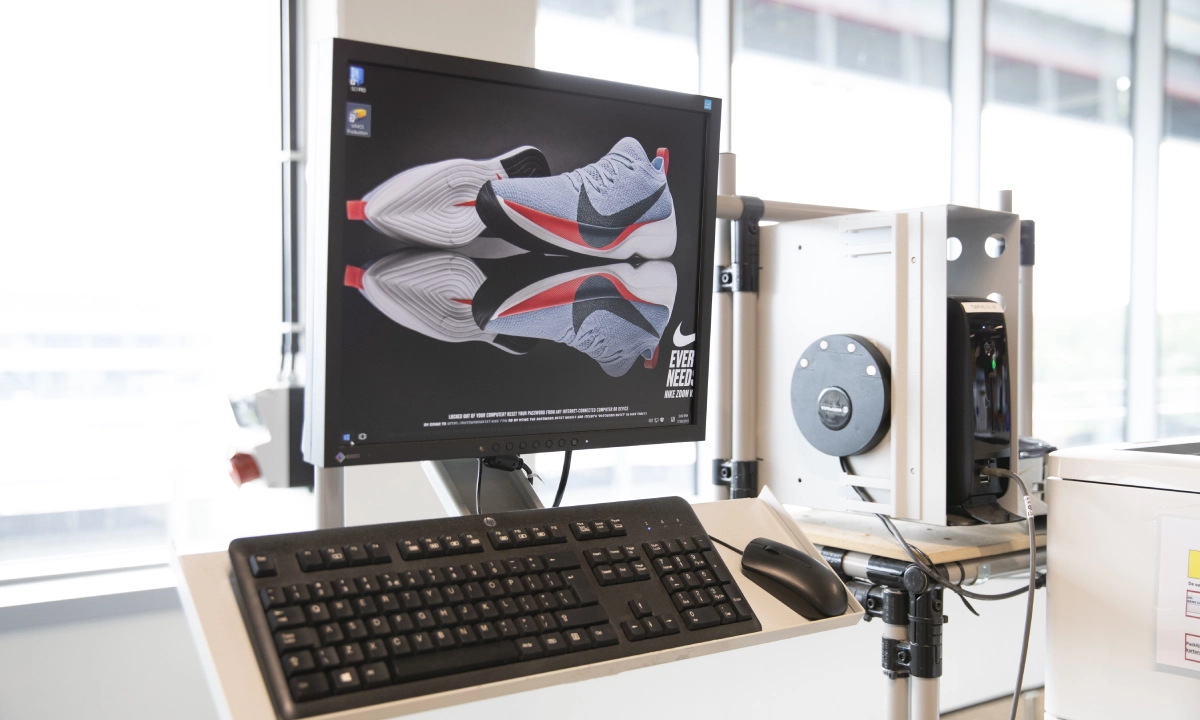
Digitalization and Personalization
Nike must continue optimizing its digital capabilities across ecommerce, mobile apps, social media marketing, virtual try-on tools, and data analytics. Digital will be core to customer experience and sales. Demand for customized and personalized products is growing. Nike can leverage technologies like 3D printing and innovative manufacturing methods to offer customizable shoes at scale.
Smart Wearable Technology
Nike can incorporate more smart features into apparel and footwear, like health tracking sensors and GPS. This caters to tech-savvy consumers who want quantified performance data. R and VR present immersive opportunities for consumers to virtually try on shoes, design custom products, and engage with the Nike brand in digital environments.
Supply Chain Automation
Nike can implement blockchain, RFID, IoT sensors, and other Industry 4.0 technologies to enable greater supply chain transparency, automation, and anti-counterfeiting. This would allow for greater transparency across their whole supply chain network while reducing human error and costs.
Additionally, supply chain automation enables faster order fulfillment and delivery times, which improves customer satisfaction.
Sustainable Materials and Manufacturing
Nike Grind repurposes old shoes into materials for various applications, supporting sustainability.
One of their innovations is Flyleather®, a material that combines recycled leather fibers with synthetic fibers, reducing the carbon footprint of their products. Nike also aims to increase their use of recycled synthetic or sustainably produced natural fibers and reduce energy consumption during dyeing and finishing processes.
Nike’s teams are working on creative solutions, considering aspects such as trims, dye techniques, pattern efficiencies, and material sourcing. This has led to sustainable product launches, like the Space Hippie collection and the Air Zoom Alphafly Next Nature.
Legal and Ethical Factors of Nike
Import and Export Regulations
Nike has complex global supply chains spanning over 40 countries for manufacturing, materials sourcing and product distribution. This means complying with a maze of import and export regulations. Violations of import/export laws can lead to serious consequences like customs delays, goods confiscation, hefty fines, or even loss of import/export privileges.
Nike has experienced shipment delays and blockages due to forced labor concerns and trade wars. Nike faced delays importing Nike Air Max shoes to the US due to a customs block on products from China’s Xinjiang region over forced labor concerns.
Consumer Protection Laws
Nike must comply with a variety of consumer protection laws on marketing, advertising, product labeling, quality and safety requirements. Lawsuits over false advertising or injuries are risks. Complying with youth marketing restrictions and truth in advertising laws are day-to-day ethical obligations for Nike in each market they sell products and run ads. Fines or lawsuits quickly hit violators.
Labor Practices and Worker Safety
Nike has faced persistent criticisms and negative press since the 1990s for sweatshop conditions, low wages, excessive overtime, and poor safety practices reported in some overseas contract factories. Unethical or illegal labor practices expose Nike to protests, boycotts, lawsuits, and prosecution.
Nike aims to prevent child labor, forced labor, discrimination, and unsafe conditions through audits and codes of conduct. But challenges still arise in enforcing consistent standards across Nike’s vast, multi-tiered supply chain.
Advertising Ethics
Nike’s bold and sometimes controversial marketing has long sparked debates on advertising ethics. Pushing boundaries can gain attention but risk brand damage if ads are insensitive. For example, Nike ads have faced backlash for appearing to trivialize mental illness, promote unhealthy body images, or use insensitive religious imagery.
Poor choices can ignite social media backlash. Nike also draws ethical concerns by promoting star athletes who exhibit bad behavior, like Tiger Woods’ adultery and Kobe Bryant’s sexual assault case. Their ads celebrating defiance can sometimes skirt too close to endorsing harmful conduct.
Counterfeiting Issues
Nike aggressively combats counterfeit versions of its shoes and apparel that flood global markets and online sites. Counterfeits siphon billions in sales. Fake Nike goods also raise ethical issues around deceiving consumers, intellectual property theft, and potentially funding organized crime. Nike works with law enforcement to shutdown counterfeit operations and educate consumers.
But the massive demand for cheap counterfeit Nikes continues to drive large underground operations. Protecting brand integrity and loyalty requires constant vigilance against counterfeiters from Nike and authorities.
Environmental Factors and Sustainability
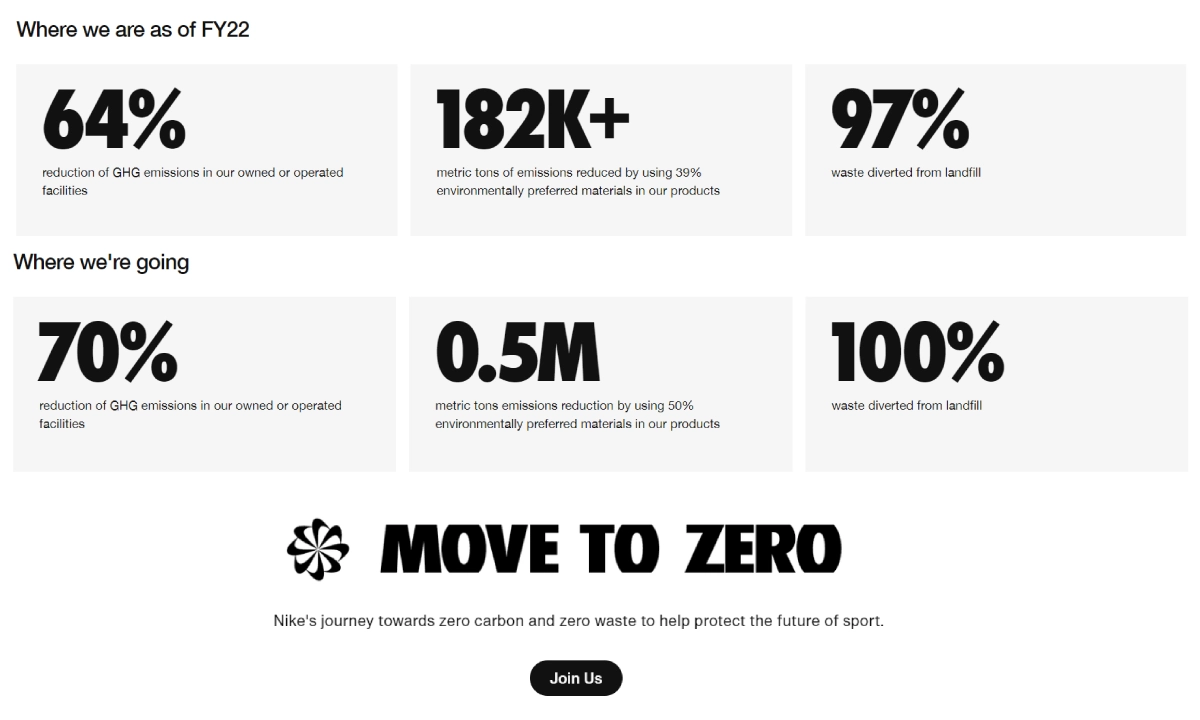
Reducing Carbon Footprint
Nike aims to power owned operations with 100% renewable energy by 2025 as part of its Move to Zero greenhouse gas emissions program. For example, Nike’s European Logistics Campus in Belgium will run entirely on renewable energy. It also aims to improve energy efficiency through LED lighting upgrades, HVAC optimizations, etc.
For supply chain emissions, Nike is working with material suppliers to switch to renewable energy and use processes that emit less CO2. It is also optimizing logistics networks to reduce transport emissions.
Nike collects local vintage and deadstock products and uses their materials to create newly designed and manufactured pieces. This recycling and repurposing process reduces waste and conserves resources.
Collaboration and Industry Standards
Nike emphasizes the importance of collaboration with other apparel and footwear companies. Together, they can advocate for recycling innovations and promote the value of recycled feedstock to governments.
Nike is collaborating with Newlight Technologies to reduce its carbon footprint by exploring the use of AirCarbon, a carbon-negative biomaterial produced by microorganisms from the ocean. Nike’s partnership with Newlight Technologies is part of its commitment to addressing climate change and environmental sustainability in its products.
Encouraging Sustainability Initiativies amongst Comsumers
Nike sources eligible returns and open box footwear to create an opportunity for customers to purchase gently used shoes at a lower price. This extends the lifespan of products and reduces the need for new manufacturing.
Nike provides a Product Care guide with tips to help customers get the most out of their favorite products, such as shoes, accessories, and apparel.
They also prompte the idea of extending the lifetime of your favorite products by maintaining and caring for them by hand. Proper care can help products last longer and reduce the need for replacements. Sustainability services are available at select Nike stores and aim to help customers reduce their environmental impact by providing sustainable options and guidance.
Adopting Circular Economy
Nike’s efforts in the circular economy not only benefit the environment but also have economic and social impacts. They set an example for the sportswear industry and resonate with environmentally conscious consumers, enhancing brand loyalty.
Nike states that 71% of its footwear is made from materials recycled from its own manufacturing process. This includes recycling materials like old shoes, plastic bottles, and factory scraps, which are transformed into fabric pellets for use in new products. This initiative is branded as Nike Grind.
The 30-year-old Nike Grind initiative uses manufacturing scrap and end-of-life footwear to make products, including playgrounds and running tracks. In the 2021 fiscal year, Nike Grind recycled over 750,000 pounds of rubber waste.
Promoting Green Marketing
Nike understands that its customers are becoming more environmentally conscious and care about sustainability practices. The company prioritizes its customers’ interests and emphasizes its sustainability initiatives as part of its brand marketing strategies. This helps build a strong connection with environmentally conscious consumers.
Nike has introduced options on its mobile app that allow customers to easily search for, shop for, and learn about sustainable products. Sustainable products are highlighted with a specially designed “Sunburst Logo.”
Nike has initiated the “Move to Zero” campaign, which focuses on reducing waste and environmental footprint. This campaign includes three key elements: Recycled Material, Refurbishment, and Packaging.
Conclusion
Well, after looking at Nike through the lens of the PESTLE framework, it seems like they are in a pretty strong position overall. Politically and legally, they have some work to do to improve supply chain oversight, but they have the resources to make positive changes. Economically, they are a massive company with steady growth, even through recessions. Socially and technologically, their brand remains highly popular, and they are innovating with new materials and manufacturing techniques.
The biggest threat seems to be the environmental factors, with increasing scrutiny on sustainability in the athletic apparel industry. Nike will need to continue finding ways to reduce their carbon footprint, use more recycled materials, and ensure safe and ethical working conditions.
Overall though, Nike is a highly successful, established company. As long as they stay ahead of changing consumer expectations and industry regulations, they should maintain their position as a leader in the athletic apparel and footwear market. It will be key for them to keep making incremental improvements in sustainability while also pushing boundaries in new product development. Exciting future opportunities could lie in growing markets like China and India as well.

I have always been fascinated by the inner workings of companies and industries. So I decided to study business to explore it more. My goal is to take all my research and turn it into cool stories that give people a better understanding of the business world.

